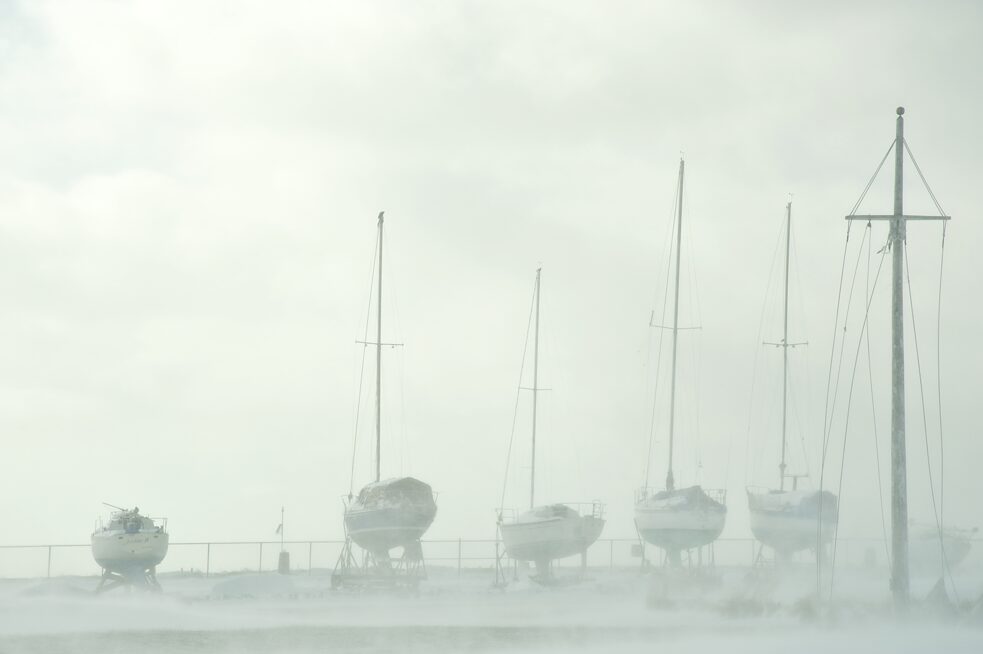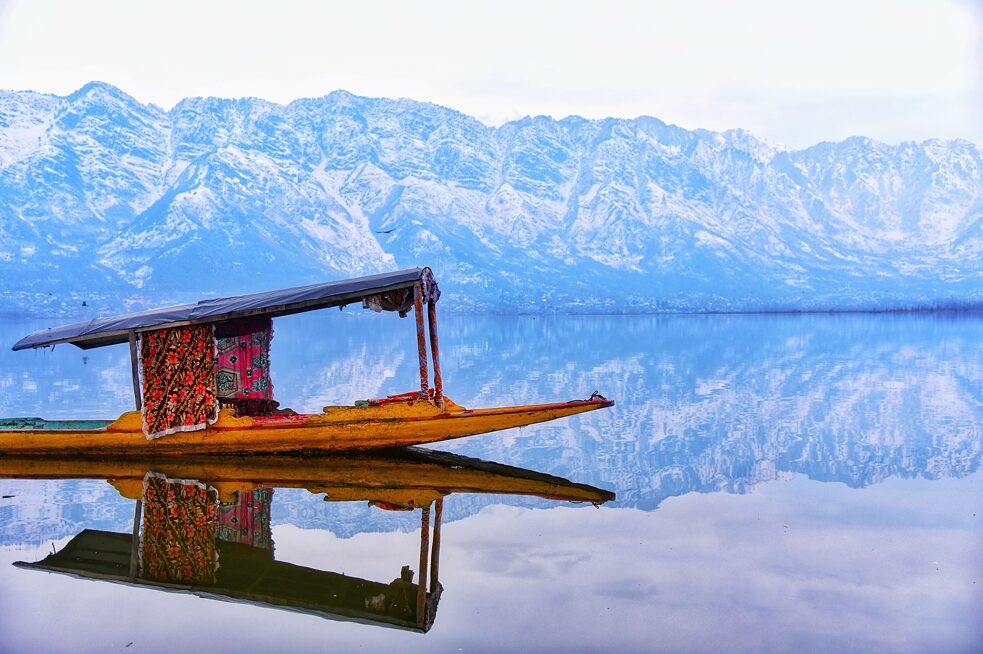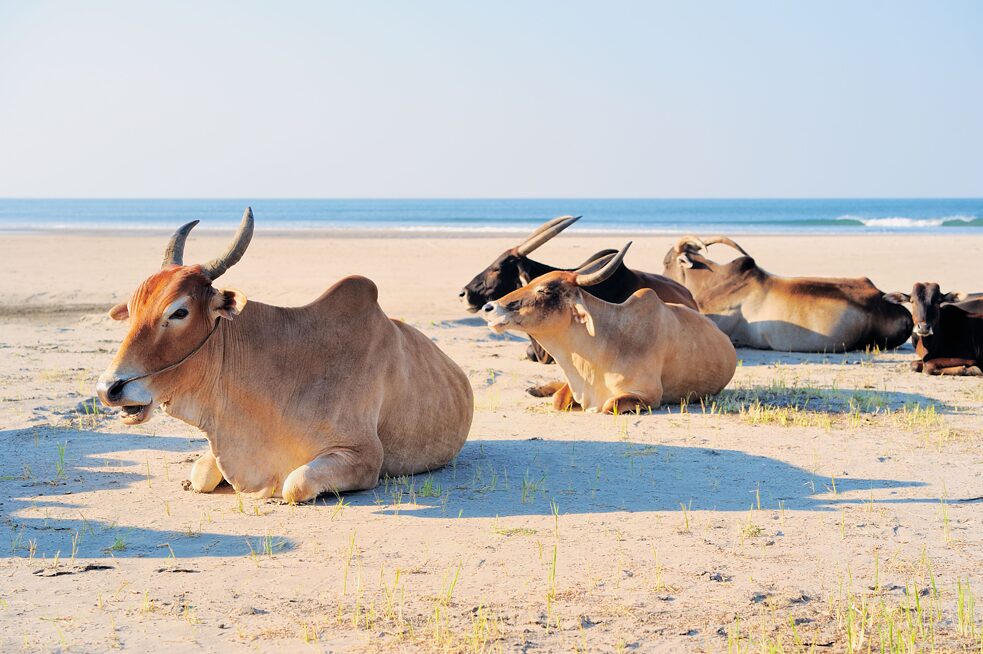Erdmuthe Hacken and
Michael Krell
Data privacy
Time seems to stop, the lively hustle and bustle a distant memory. Standstill. In pupation for a few months, these magical places develop a tranquil and contemplative charm unnoticed by the rest of the world. We thought they deserved a photo gallery. Here come places that have fallen out of time — in Quebec, Goa, Kashmir, and Kerala.
-
 © Linda Rutenberg
© Linda Rutenberg
Quay de Percé: If you drive northeast along the southern shore of the St. Lawrence River from Montreal, Canada, the road leads to the beautiful, wild Gaspé Peninsula after about half a day. The French name Gaspésie is derived from the name of the Kespek tribal group of the Mi’kmaq First Nation that once lived here. In Quebec, the Gaspé Peninsula is considered one of the most beautiful holiday destinations of all. There is simply everything here: lush fields, untouched forests, steep mountains, a rugged steep coast, and picturesque beaches. You can have it all and easily within reach. It is a Quebec holiday tradition to circle the peninsula once. Near the eastern tip lies the village of Percé. A paradise for kayaking, birdwatching, and hiking in summer, time stands still here in the winter. This picture shows the dock on the village’s beach, which is a hub for water sports in the summer.
-
 © Linda Rutenberg
© Linda Rutenberg
Boats in Paspébiac: The Gaspé Peninsula in Quebec is the ideal place for active vacationers. Since peninsulas are mainly coastline by nature, water sports are a particularly popular activity. This is also true for the village of Paspébiac located on the Baie des Chaleurs (Bay of Warmth). However, the Gaspé Peninsula and Paspébiac get so cold in the winter due to the sea winds that even the flowing waters of the St. Lawrence River partially freeze. Accordingly, water sports are not recommended during the cold season. Most sporting equipment stays in the basement for the winter, but boats aren’t as easy to put away. A good solution for them is pictured here: Simply park them on the shore. A ghostly image in the wintertime, it’s hard to imagine that tourists will be sporting life jackets here in a few months.
-
 © Linda Rutenberg
© Linda Rutenberg
The Cemetery of Sainte-Anne-des-Monts: The fishing village of Sainte-Anne-des-Monts in Quebec lies in the north of the Gaspé Peninsula at the foot of the Chic-Choc Mountains by the entrance to a national park. One of the most popular activities in the area is hiking to the summit of Mont Jaques-Cartier, named after the first European to “claim” the land for France in the 16th century. Our picture, however, shows a place that is otherwise characterized by silence: the local cemetery, which is still operating — at least in the summer because, as you can tell by looking at the untouched blanket of snow in this photo, the standstill is almost palpable in the winter.
-
 © Amjed
© Amjed
Dal Lake in Kashmir: This urban lake in India is known as the “jewel in the crown of Kashmir” or paradise in the center of Kashmir. A night on one of the more than 1,000 houseboats on Dal Lake is a romantic highlight for tourists from home and abroad. Unlike in Kerala, the houseboats are firmly anchored on the shore of the 21-square-kilometer lake. Visitors can only reach these floating luxury accommodations by shikaras, charmingly decorated local rowboats. In the high season, vibrant vessels dominate the lake. In the winter, they disappear, and Dal Lake shows its quiet, austere side. Life comes to a virtual standstill. The houseboats fill with mothballs, and the shikaras only make fishing trips. When the lake freezes, there is hardly a soul in sight.
-
 © Storm Is Me
© Storm Is Me
The Kerala backwaters: Kerala is a popular tourist destination in South India. In the high season, it teems with local and international tourists. Houseboats sail through the picturesque backwaters one after the other. But as soon as the monsoon brings cooler weather, silence and tranquility replace the hubbub on the water. Calm descends over the lakes, canals, and lagoons. The barges savor the well-deserved break, bobbing contentedly in a jungle of palm forests, rice paddies, and impenetrable bushes. Nature takes over. In the off-season, the backwaters in Kerala have a particularly enchanting glimmer.
-
 © Anatoli Styf
© Anatoli Styf
The Coast of Goa: Between May and September, the sublime Indian state of Goa welcomes a new season. The monsoon introduces a humid heat that prevents tourists from enjoying a relaxing holiday, and the choppy sea is not exactly inviting to swimmers. The water floods the beach bars, sometimes swallowing up entire beaches. This is why many hotels, restaurants, and shops shut down — especially near the beach. There is a yawning emptiness, particularly in the outermost reaches of the Indian state. But the sacred cows are happy because they finally have the wide expanses of shoreline to themselves.












